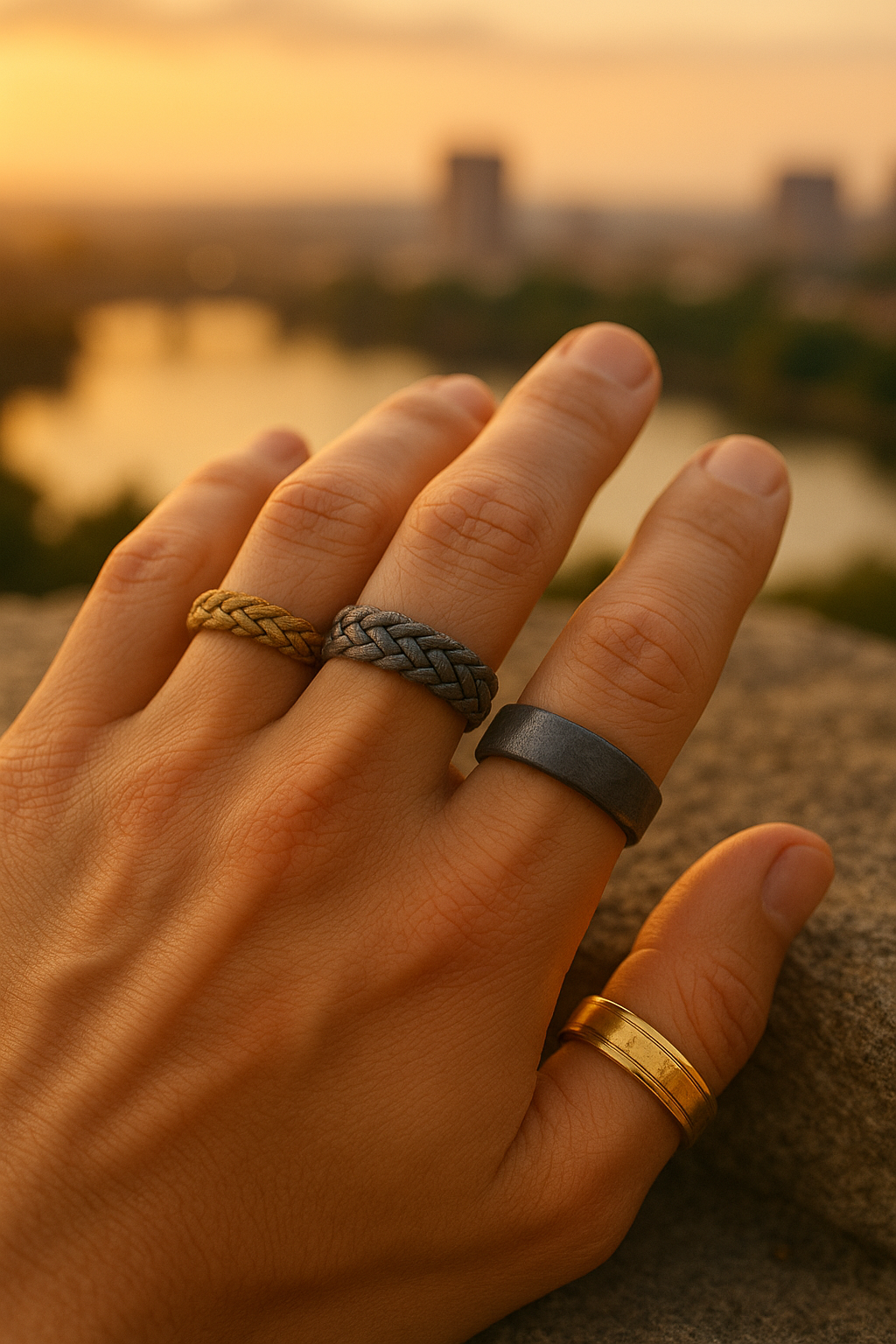
The history of men’s wedding rings is anything but static. Once plain and practical, they’ve grown into powerful symbols of love, style and self-expression. Today, a band can be sleek and minimal, rugged and textured, or bold enough to make a statement. Yet through every evolution, one truth remains: a wedding ring is a daily reminder of lasting commitment.
Ancient Origins: From Reeds to Iron
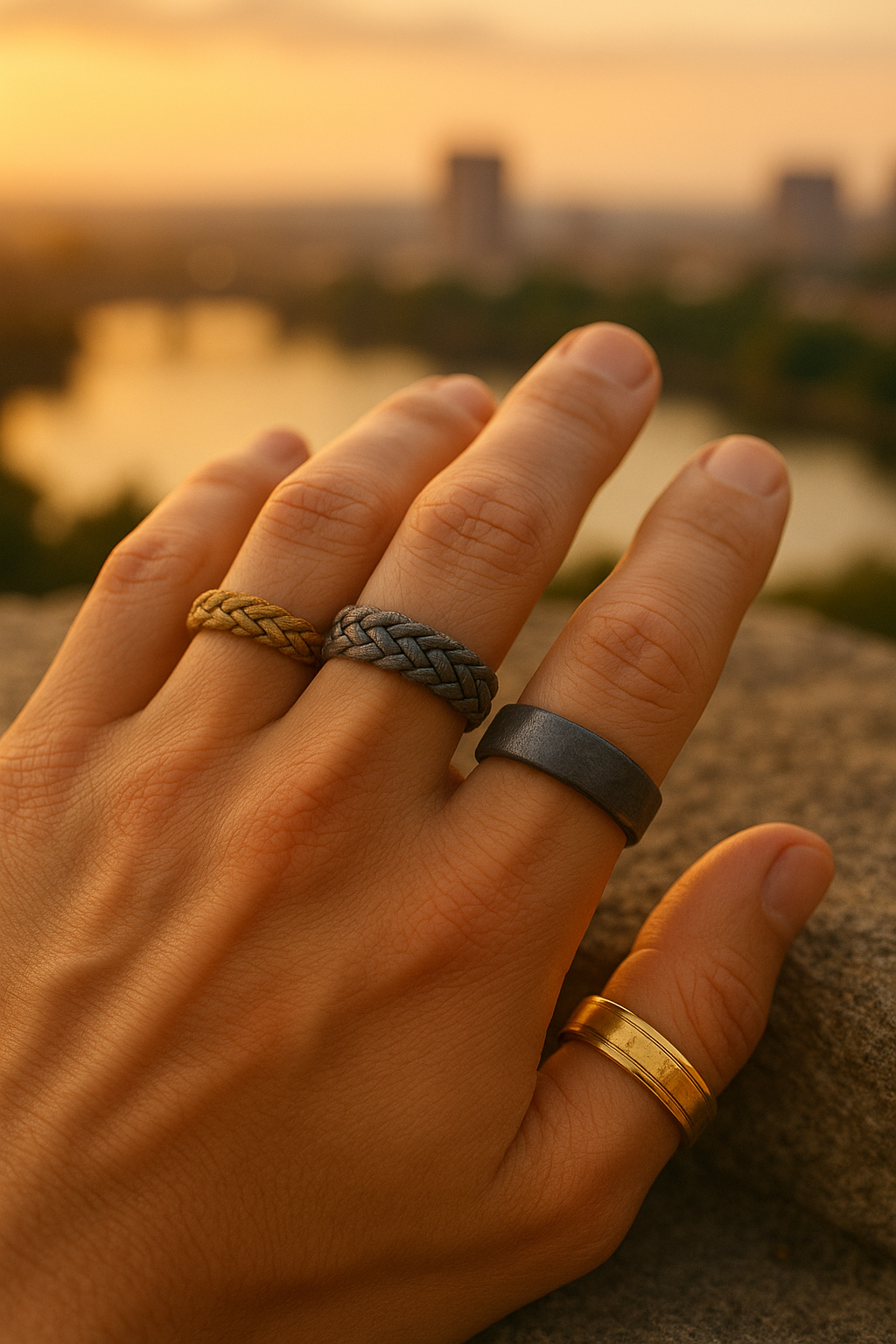
The history of men's wedding rings dates back thousands of years along the Nile. Egyptians crafted simple circles from reeds or hemp, seeing the unbroken loop as a powerful symbol of eternity. Later, the Greeks wove braided materials into tokens of devotion, often exchanged between lovers. The Romans brought strength and performance into the picture, first with iron bands to mark loyalty, then with gold to formalise marriage as a legal union. What started as fragile strands became enduring symbols, laying the foundation for the rings we know today.
Medieval to Renaissance: Gimmel & Signet Traditions
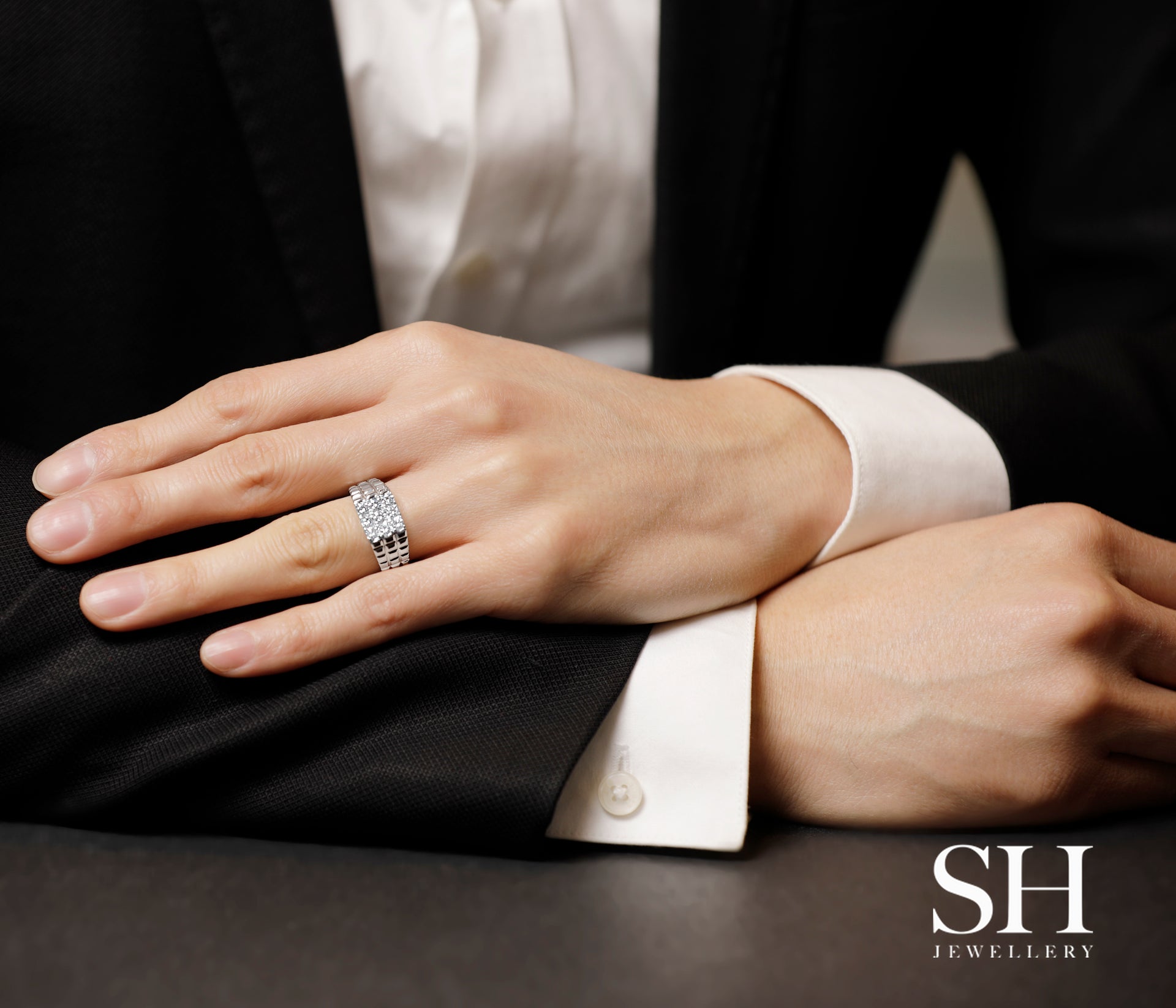
During the Middle Ages, symbolism in rings grew richer. Gimmel and fede rings, crafted with two or three interlocking bands, represented the unity of two lives coming together. As they clasped together, the rings became whole, just like the marriage they marked. At the same time, signet rings gained prominence. Worn by men of influence, these engraved seals were more about status and authority than romance, yet they showed how rings evolved beyond function into powerful personal symbols.
The 19th Century & Early 20th Century: A Slow Comeback
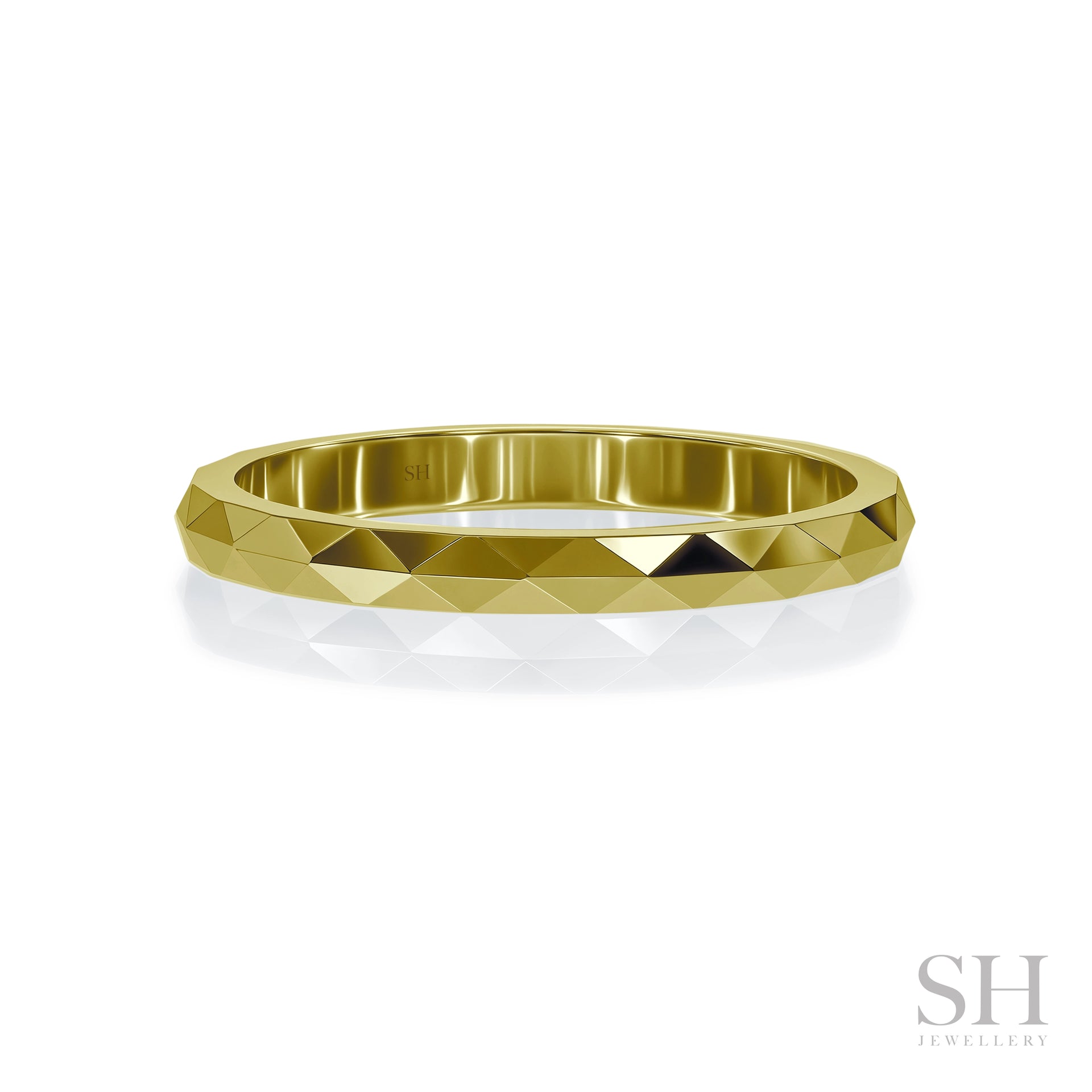
Men’s wedding rings began to reappear during the 19th century, though they were far from common. In elite circles, gold bands symbolised loyalty and performance, but for most men, a ring was viewed as unnecessary or even extravagant. Economic realities also played a role: the cost of precious metals kept rings out of reach for working-class grooms, and events like the Great Depression meant practical priorities often came before jewellery.
World Wars & Post-War Surge
World War II marked a turning point in the history of men’s wedding rings. Soldiers heading overseas wore bands as tangible reminders of their wives and families, tokens of love carried into battle. When peace returned, the tradition followed them home. By the post-war years, wearing a wedding ring had shifted from a rare gesture to an expected norm, firmly cementing men’s wedding bands as symbols of loyalty and commitment in Western culture.
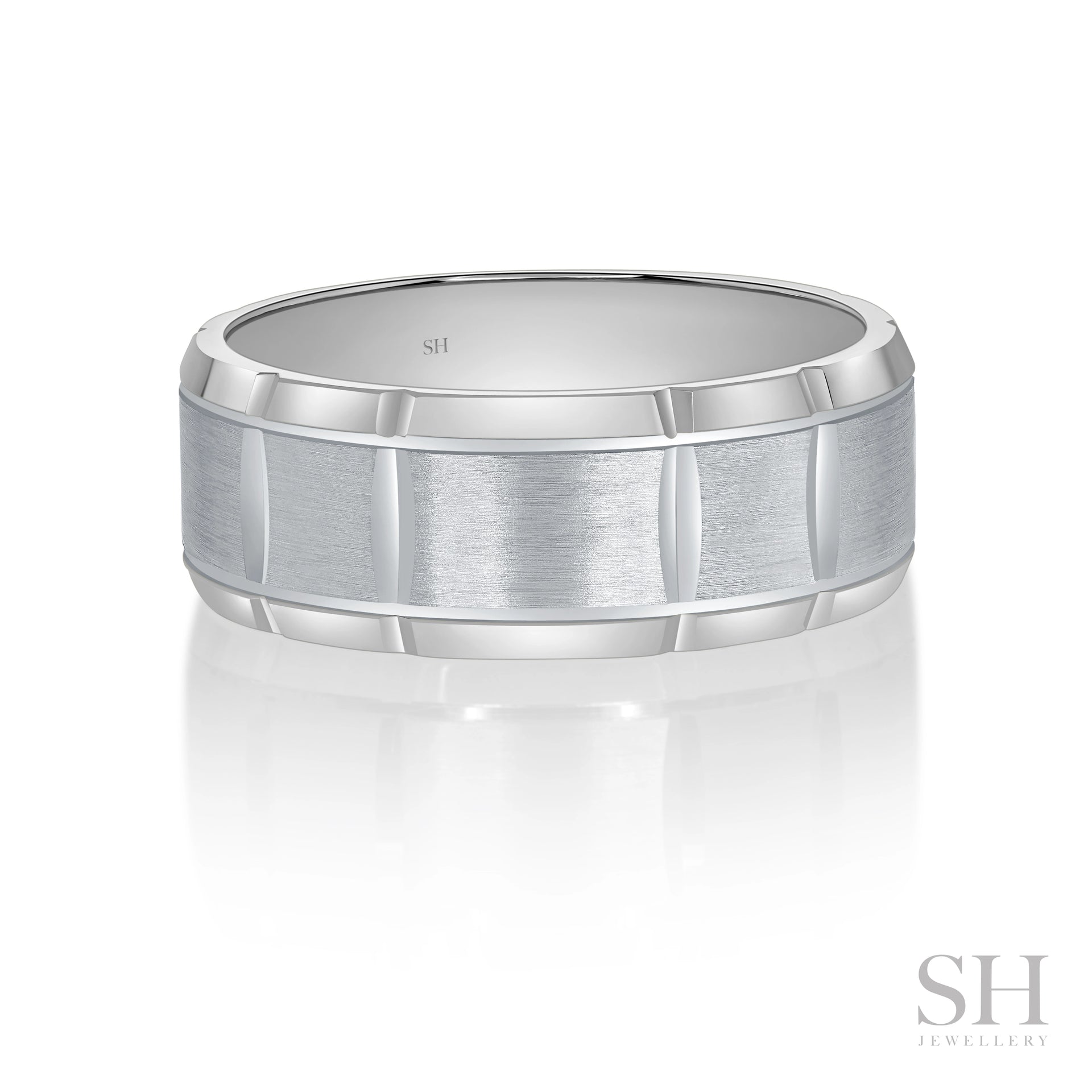
Shop Our Men's Wedding Rings
Meaning & Symbolism: Beyond the Circle
The circle of a wedding ring symbolises eternity, a promise with no beginning and no end. Materials further that meaning: gold represents loyalty, silver reflects purity, while diamonds signify strength and resilience. Across cultures, symbols carry unique weight, from Celtic knots symbolising interconnectedness to the Irish Claddagh, which unites love, loyalty, and friendship. In some Asian traditions, jade is cherished for harmony and protection.
However it’s expressed, a ring becomes a vessel of meaning that transcends style. Explore more about wedding ring meanings.

Modern Evolution: Materials, Customisation & Trends
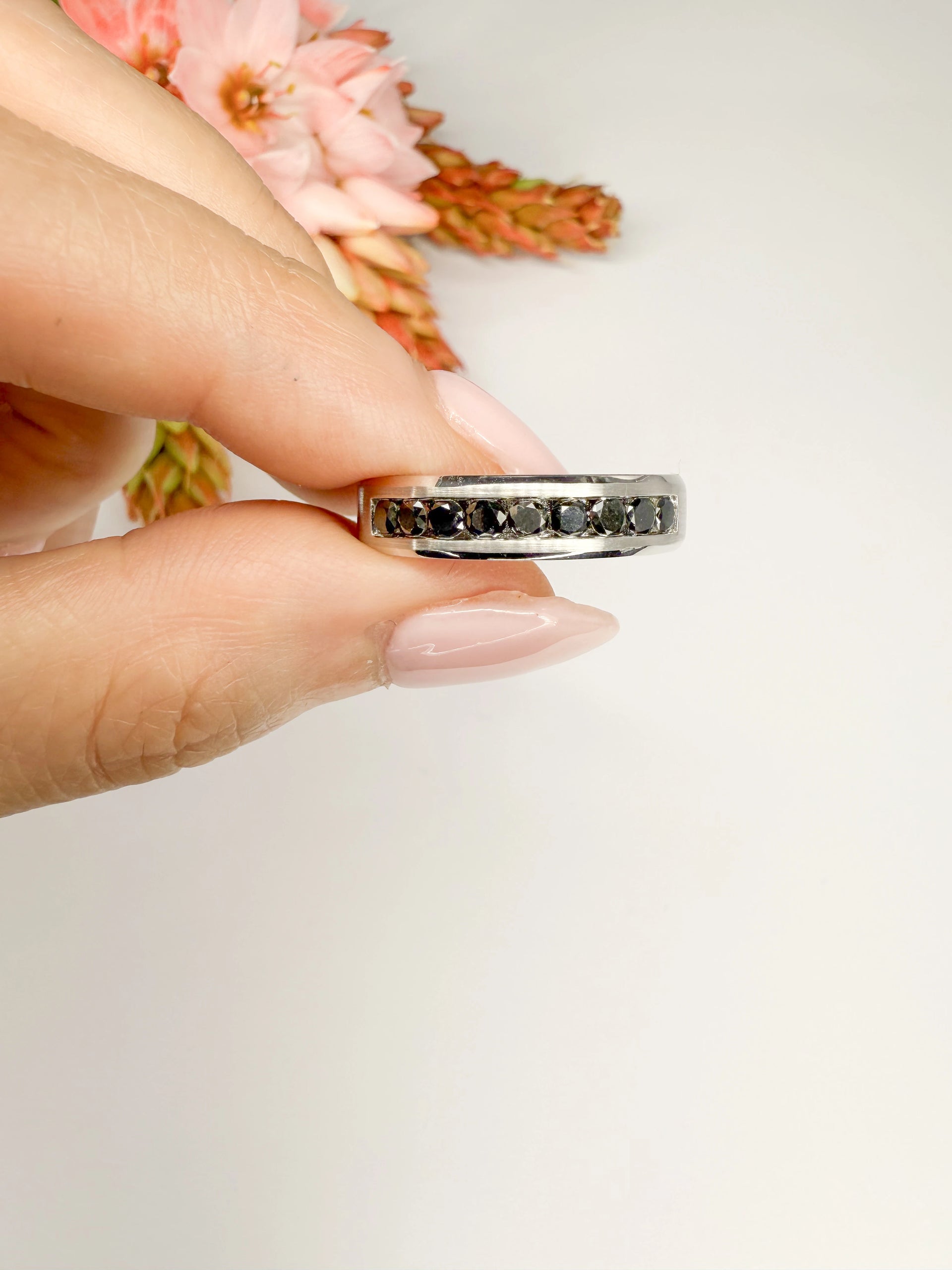
Today, men’s wedding rings extend far beyond traditional gold and platinum. Alternative materials like titanium, tungsten, cobalt, ceramic, carbon fibre, and even wood offer durability with a contemporary edge. Personalisation is now central, with engravings, mixed metals, and unique textures making each band one-of-a-kind. Some even lean into tech-forward designs, blending innovation with tradition.
Fashion shifts, from the 1960s “peacock revolution” to today’s embrace of expressive jewellery, continue to influence men’s choices. Men's modern wedding band are as much about individuality as they are about commitment.
Why It Matters: From Ritual to Personal Statement
The history of men's wedding rings shows how a simple band has grown into something far more personal. What was once a ritual symbol of union is now also an expression of identity, taste and lifestyle. Choosing a ring is about more than tradition; it’s about carrying your story with you every day.
At SH Jewellery, our exclusive designs help you create a ring that speaks to both your commitment and your individuality.
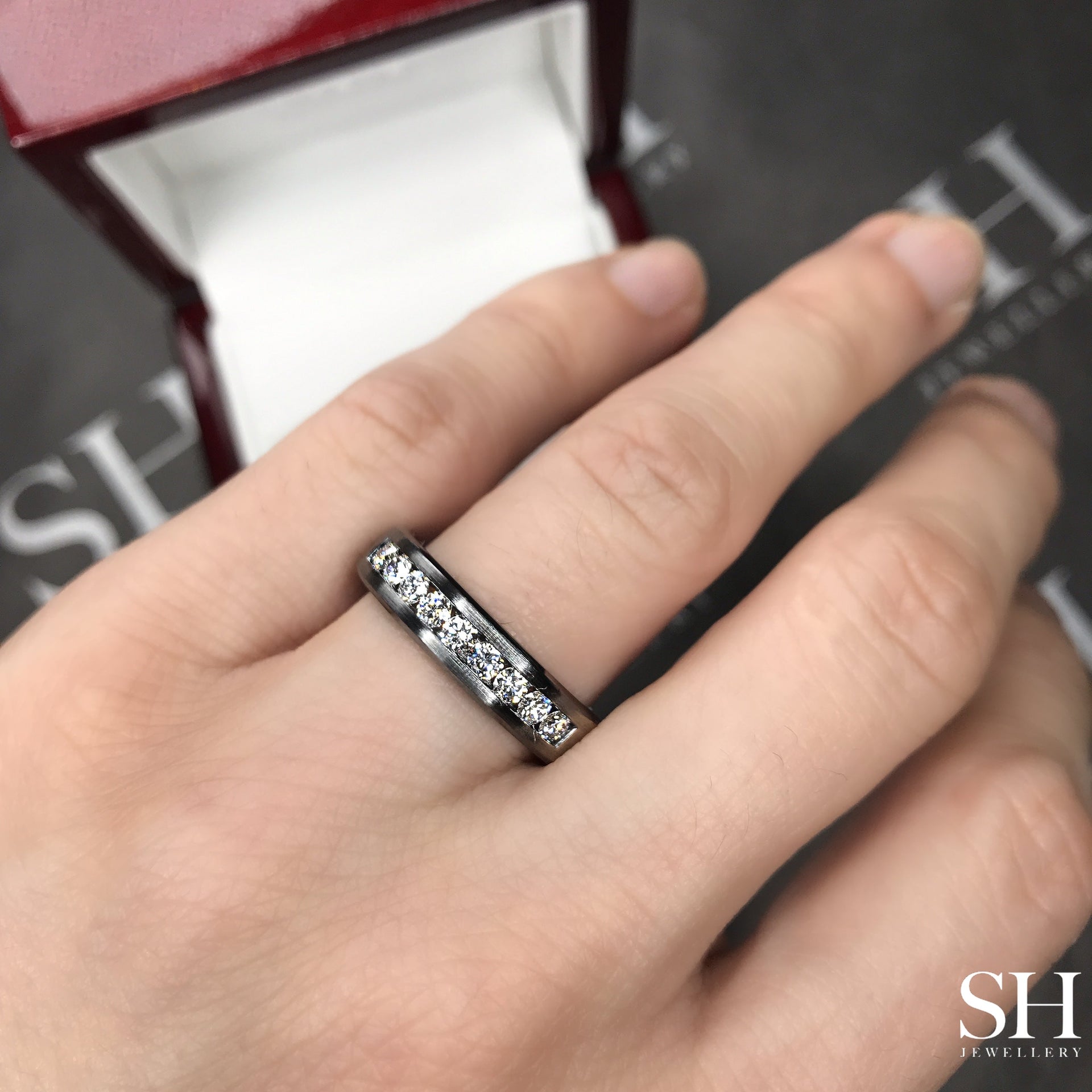
Your Ring, Your Story: Start Your Chapter
From understated bands to bold statement pieces, the history of men’s wedding rings has shaped today’s modern styles. Your ring doesn’t just symbolise commitment. It speaks to your character, individuality and way of life.
Explore our men’s wedding ring collection to find a design that blends classic symbolism with contemporary edge, giving you a piece that’s as distinctive as the way you live and love.
Frequently Asked Questions
Men began wearing wedding rings in ancient times, but the practice was inconsistent across cultures. In Western tradition, rings were rare for men until the 20th century. Their popularity surged during World War II, when soldiers wore them as reminders of their loved ones at home.
The earliest men’s wedding rings were crafted from simple, natural materials. Ancient Egyptians used reeds, hemp, or leather as symbols of eternity. Later, the Greeks used braided materials, while the Romans introduced iron and gold bands, marking loyalty, property rights, and eventually, legal union.
During World War II, soldiers adopted wedding rings as emotional tokens to stay connected to their loved ones while overseas. After the war, this sentiment carried into everyday life, and social norms embraced men’s wedding bands as standard symbols of marriage in Western culture.
Men's wedding rings shifted from plain and functional bands to designs that balance tradition with personal style. Today, many grooms choose diamond accents for a refined edge, with options like floating, prong set and timeless. Others prefer contemporary metals such as titanium, tungsten, or carbon fibre. For those seeking a classic finish without diamonds, brushed or polished gold, platinum, and two-tone bands remain favourites.
Gold symbolises tradition, wealth, and permanence, while silver represents clarity and modern elegance. Platinum conveys rarity and prestige, titanium suggests strength and resilience, and tungsten reflects durability. Alternative materials like wood or carbon fibre often highlight uniqueness, sustainability, or a connection to nature.
Yes, cultural traditions shape men’s wedding rings around the world. In some cultures, men wear ornate designs with gemstones, while in others, simple bands remain customary. Certain traditions favour specific symbols, such as Celtic knots or Claddagh rings, which add layers of heritage and meaning to the piece.


















